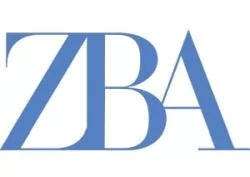Introduction
The Supreme Court in Committee of Creditors of Essar India Steel Limited v. Satish Kumar Gupta & Ors. ("Essar Steel-SC") ruled that all claims must be submitted and decided by the resolution professional of a corporate debtor undergoing insolvency proceedings under the Insolvency and Bankruptcy Code, 2016 ("Code") so that a successful resolution applicant starts on a fresh slate. In the same vein, it held that a successful resolution applicant cannot subsequently be faced with "undecided" claims after approval of the resolution plan by the committee of creditors ("CoC") of the corporate debtor.
The Supreme Court's ruling on this aspect of the matter, though well-intentioned, has not fully considered the position of unquantified claims that are subject to adjudication by a court or arbitral tribunal.
Expansive definition of claim under IBC
A "claim" under the Code has been expansively defined and includes right to remedy for breach of contract whether or not such right is reduced to judgment, fixed, matured, unmatured, disputed, undisputed, secured or unsecured. Accordingly, the Code permits unadjudicated claims which have not matured as valid. These unquantified or unadujdicated claims are particularly problematic as the resolution professional may not be able to put a value to these claims. Matters get further complicated, if by the time the claim is adjudicated the insolvency resolution process gets over.
Supreme Court in Essar-SC
The NCLT, Ahmedabad in its judgment dated 8 March 2018, held (in the Essar Steel Case) that unadjudicated claims cannot be refused at the threshold by the resolution professional. The NCLT supported the resolution professional's decision to assign a nominal value of Re. 1 to disputed claims subject to the outcome of such disputes but ordered the resolution professional to admit entire claim amount for certain creditors.
Eventually when the matter travelled to the Supreme Court, the Supreme Court agreed that the resolution professional was correct in assigning Rs. 1 due to the pendency of disputes with regard to unadjudicated claims, but overruled the NCLT order directing the resolution professional to admit entire claim amount.
What remains ambiguous and open to debate is whether such unadjudicated claims can continue to be pursued against the rehabilitated company. The Supreme Court did not clarify whether such claims can be pursued after rehabilitation of the corporate debtor. Interestingly, the Supreme Court did not express any view on whether disputes will continue after the moratorium has been lifted. At the same time, the Supreme Court disagreed with the NCLAT that claims which may exist after approval of the resolution plan can be decided under Section 60(6) of the Code. The Supreme Court relied on Section 31 of the Code to rule that there is no scope of Section 60(6) of the Code as an approved resolution plan is binding on all stakeholders of a corporate debtor.
Unquantified Claims- Are Creditors Remediless?
The NCLAT in Andhra Bank v. F.M. Hamerele Textile Ltd. ruled that the debt which a corporate debtor owes for payment in future, if not taken into consideration in a resolution plan, is not automatically extinguished. It may be argued that the Supreme Court in Essar Steel-SC has partially overruled this observation by holding that once a resolution plan is approved by the CoC, it will be binding on all stakeholders. Similarly, while approving the resolution plan for, The Rubber Products Limited, being the corporate debtor, the NCLT Mumbai directed that disputes pertaining to wage claims pending before various courts are to be adjudicated in accordance with law. The Supreme Court in Essar Steel-SC has not clarified whether disputes or proceedings pending before any court of law or arbitral tribunal can continue after expiry of the moratorium and a judgment creditor can proceed against the successful resolution applicant of a corporate debtor. The lack of clarity on this issue may result in such creditors being remediless under the Code.
Conclusion
The Supreme Court in Essar Steel's case has rightly held that an approved resolution plan is binding on all stakeholders as this is in keeping with the spirit of the Code. However, the Supreme Court's omission to clarify the status of unquantified claims can operate very harshly on such creditors. Clearly, the Code should not be interpreted so as to completely extinguish such claims. Ideally, the resolution professional should classify such claims as a contingent liability and the CoC should take such claims into consideration while approving a resolution plan. It is hoped that an authoritative pronouncement by the Supreme Court clears the air.
Originally published 16 July, 2020
The content of this article is intended to provide a general guide to the subject matter. Specialist advice should be sought about your specific circumstances.

